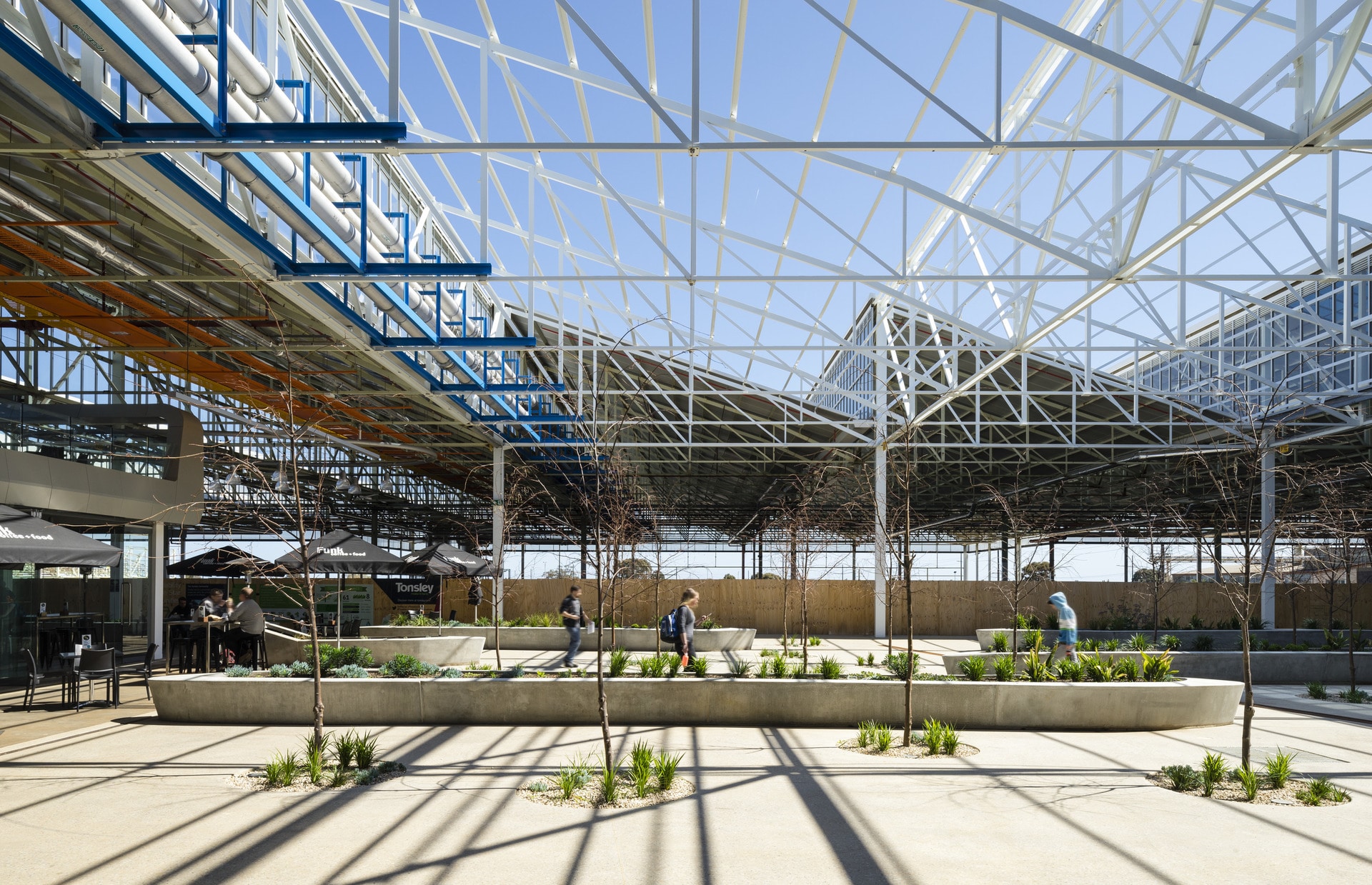
[Photo: Sam Noonan]
PROJECT PROFILE
COMPLETION
May 2015
BUILDING SIZE
47,000 square meters
DESIGN PARTNERS
Tridente Architects
MANAGING CONTRACTOR
Lendlease
LANDSCAPE ARCHITECTURE
Oxigen
STRUCTURAL AND CIVIL ENGINEER
KBR inc
When the government of South Australia asked Woods Bagot to transform a former Mitsubishi Motors manufacturing site into a vibrant, mixed-use employment precinct, their team knew people-centric design was key.
Woods Bagot and Tridente Architects worked closely with Renewal SA on a comprehensive design for the adaptive reuse project that would support advanced manufacturing employment in the Australian city of Adelaide.
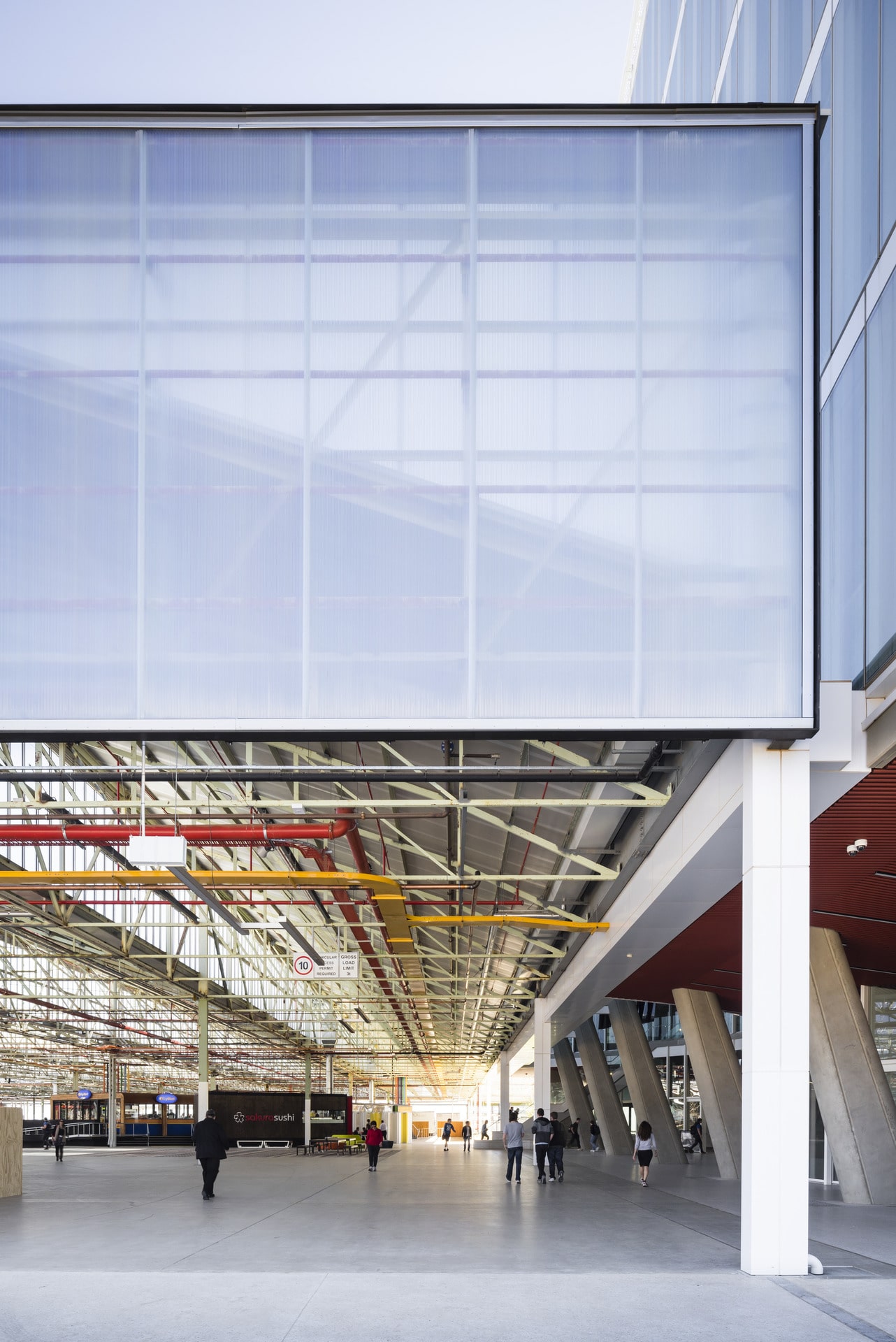
[Photo: Sam Noonan]
To say their efforts were a success is an understatement. The Tonsley MAB (Main Assembly Building) and Pods have been recognized with many awards, from the Australian Institute of Architects David Oppenheim Award for Sustainable Architecture 2016 to the WAN Adaptive Reuse Award 2015. We recently talked with Woods Bagot’s Thomas Masullo and Milos Milutinovic about the project and the firm’s approach in general. Woods Bagot is a global design and consulting studio with more than 850 experts across 17 studios in six regions.

[Photo: Sam Noonan]

[Photo: Sam Noonan]
gb&d: What is your design philosophy?
Woods Bagot: Woods Bagot is a People Architecture company that places human experience at the center of the design process to deliver engaging, future-oriented projects that respond to the way people use space.
People Architecture is both the process for design as well as Woods Bagot’s philosophy of a global practice. At its heart, People Architecture is a people-centric design approach that allows each project to be underpinned by deep analysis of user experience. It is delivered through the confluence of cross-sector knowledge informed by human behavior and community mapping. The vision of the firm culminates in projects that are built around the needs of users.
Sustainability was paramount throughout the design, with a planned 4-megawatt solar array on the roof producing affordable, sustainable energy for tenants and communications infrastructure providing connected technology as a basis for a smart grid energy system.
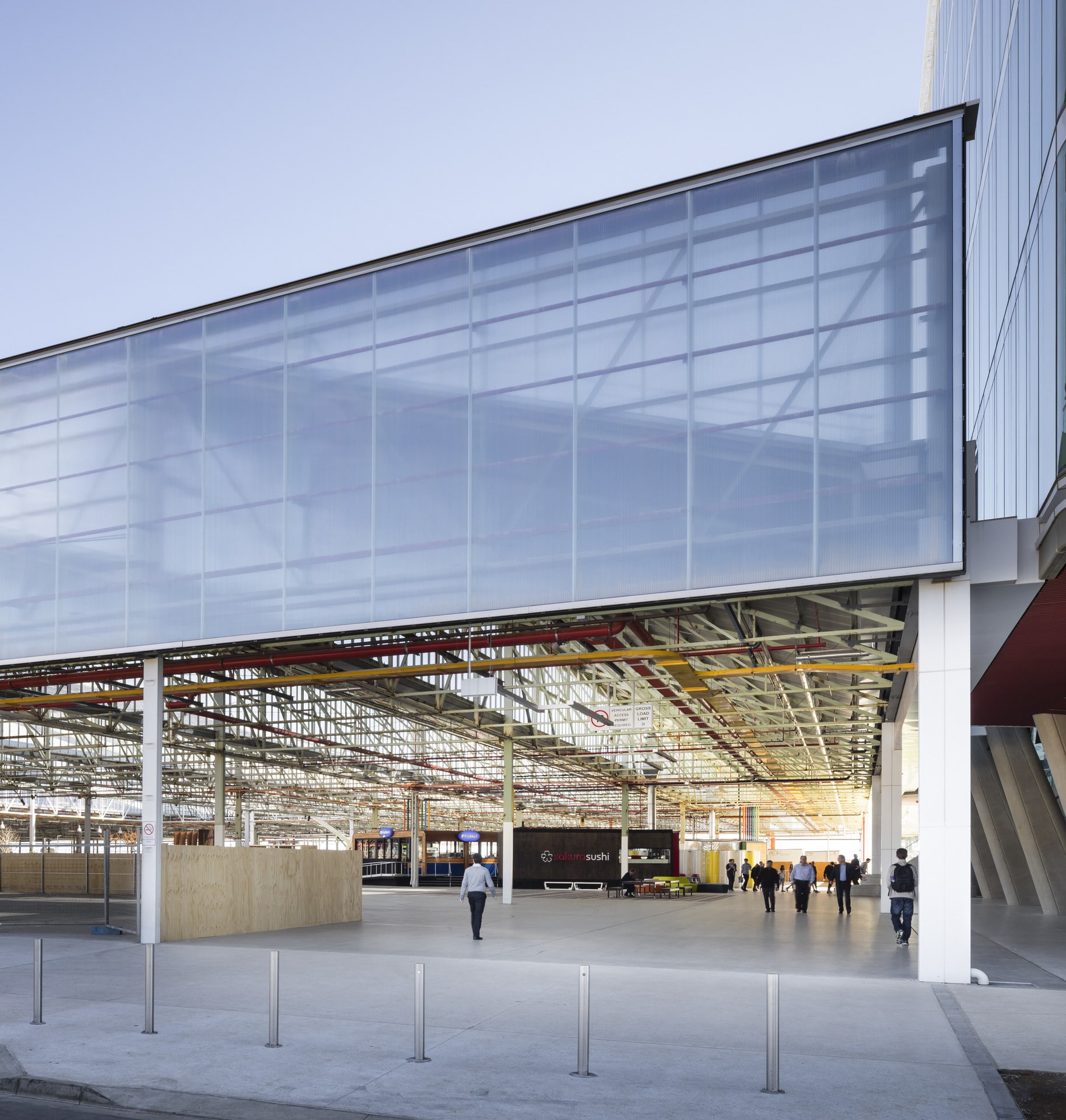
[Photo: Sam Noonan]

[Photo: Sam Noonan]
gb&d: What was most exciting to you about this project?
Woods Bagot: Sustainability was paramount throughout the design, with a planned 4-megawatt solar array on the roof producing affordable, sustainable energy for tenants and communications infrastructure providing connected technology as a basis for a smart grid energy system. Four urban forests inside the Main Assembly Building (MAB) provide naturally shaded green spaces, cool the air, and reduce the sun’s thermal load on the roof. “The Tonsley redevelopment represents a landmark South Australian project that is world-class in its ambitions, setting a new benchmark for sustainable urban regeneration,” says Woods Bagot Director Thomas Masullo.
Woods Bagot Senior Associate and Project Leader Milos Milutinovic said sustainability was also a key driver of the design. “Our choice to retain and rejuvenate some 50,000 square meters of existing roof structure has saved approximately 90,000 tons of carbon—which is equivalent to taking 25,000 average cars off the road for one year. This also resulted in significant time, cost, and a reduction in decontamination and construction waste by extending the economic life of the existing structure.”
The broader Tonsley precinct is a public place where water sensitive urban design principles will support sustainability and reduce running costs. It also provides connected walking and cycling paths for easy access to public transport.
The existing roof and walls mediate between the exterior conditions and the interior semi-conditioned and conditioned spaces. The roof cladding can block or allow solar gains to enter the space. Options were evaluated to select the optimum combination of open, glazed, baffled roof sections. Four urban forests inside provide naturally shaded green spaces, cool the air, and reduce the sun’s thermal load on the roof.
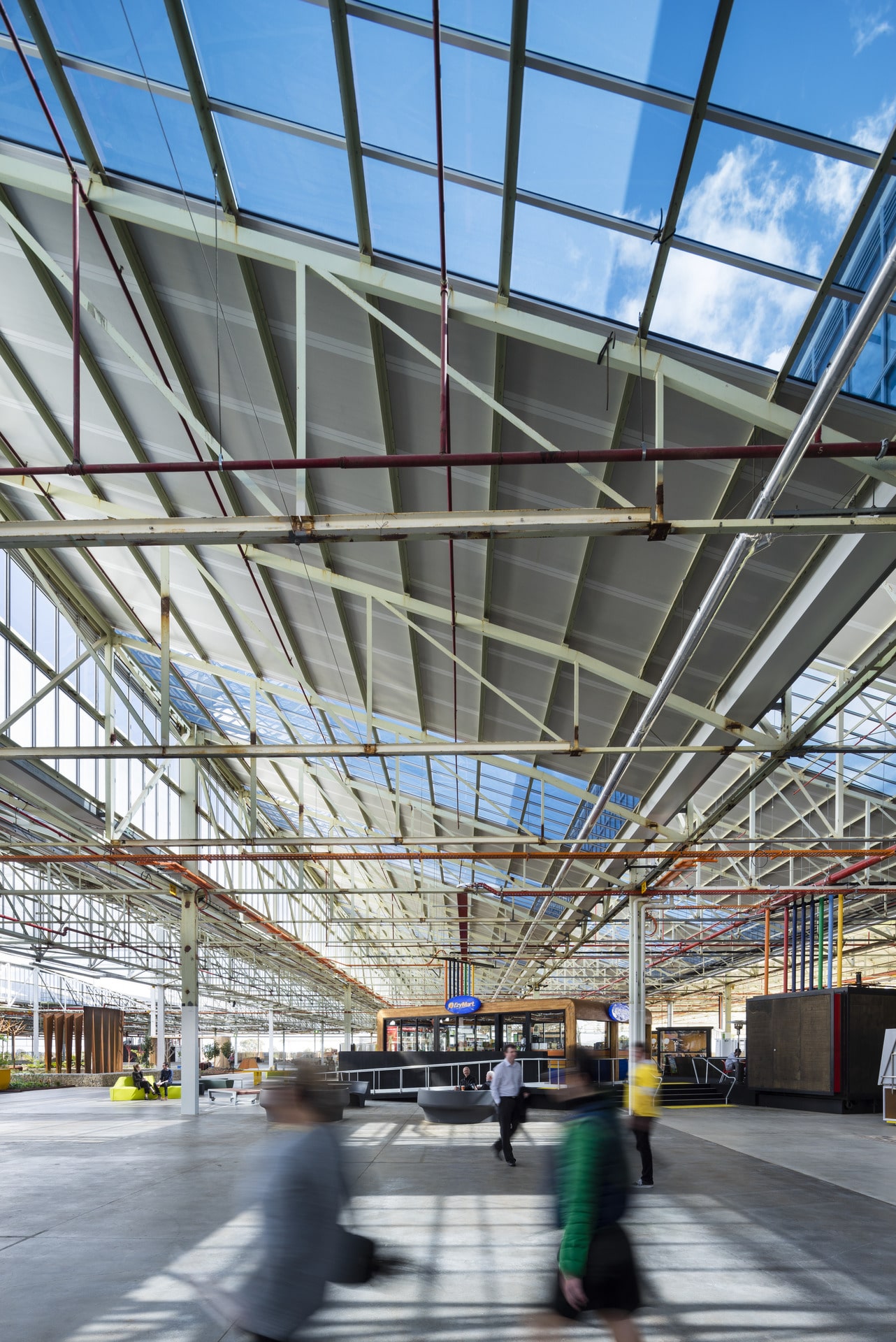
[Photo: Sam Noonan]
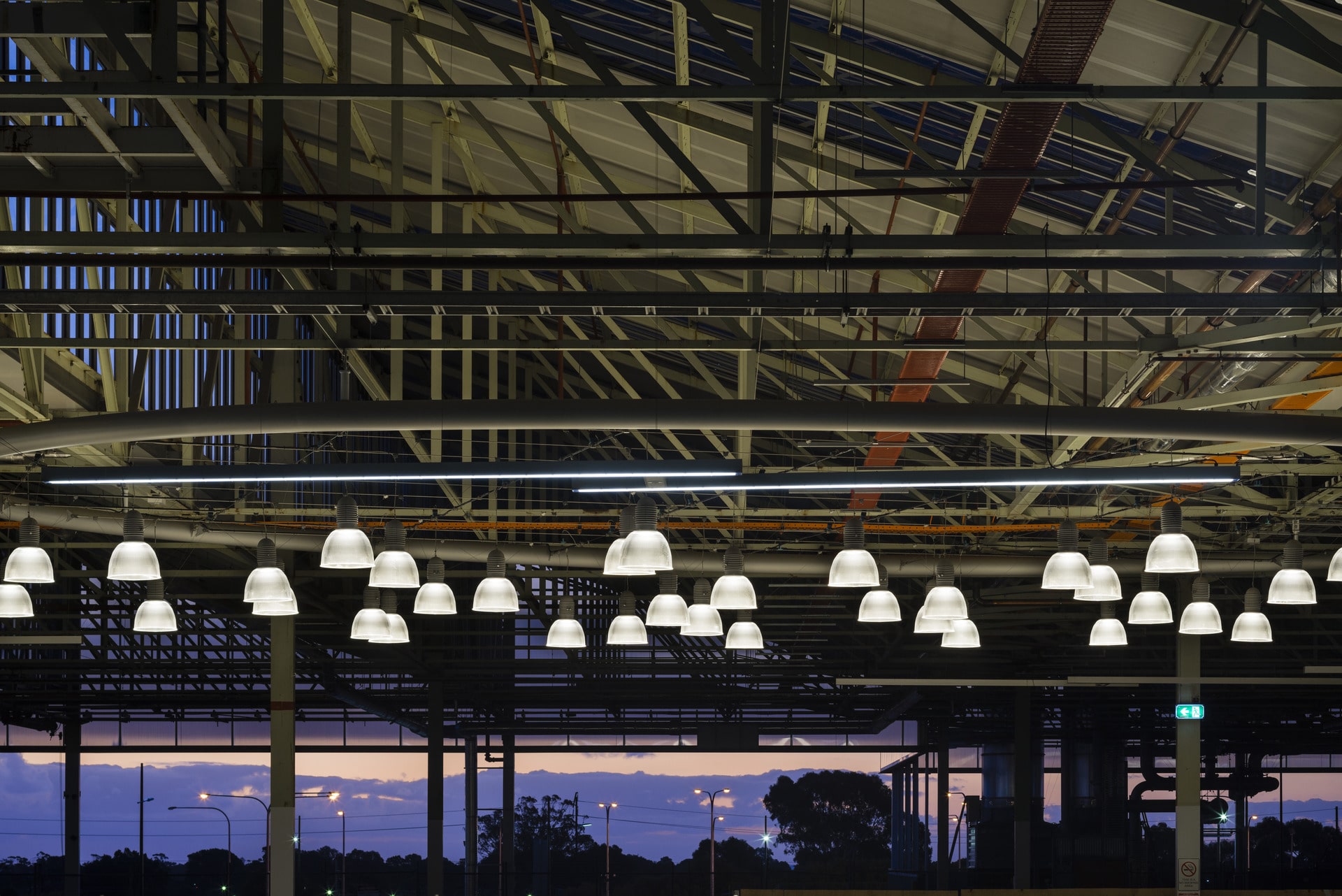
[Photo: Sam Noonan]
gb&d: What was the project’s biggest challenge?
Woods Bagot: Woods Bagot’s design activates land that would otherwise be of low value, provides economic and environmental benefits, and creates a strong brand identity for a building rich in historical importance for South Australia. The project respects the strong social connections to the building while firmly establishing its place in the future of the state’s economy.
Tonsley is now a vibrant, mixed-use employment precinct supporting clean technologies, sustainable industries, advanced manufacturing, education, and research. The Main Assembly Building design became part of the demonstration of what a new industrial employment precinct would look like. The “umbrella” of the existing structure celebrates the industrial heritage of the building, creates a unique public destination, and delivers a clear layout with a highly flexible work environment. The design also incorporates a “pod” approach that is adaptable, flexible, and highly functional.
gb&d: What is one lesson you learned during the process?
Woods Bagot: Recognizing the design solution needed to be a complex urban environment with a series of streets and laneways for services and equipment, the team conducted complex thermal modeling to assess the way prevailing winds would move through the precinct, determining that more roof openings were required to allow air to move around more readily. Considering daylight, mapping the main circulation spaces to create a mix of clear and solid roofs.
Learn more about at Woods Bagot.
